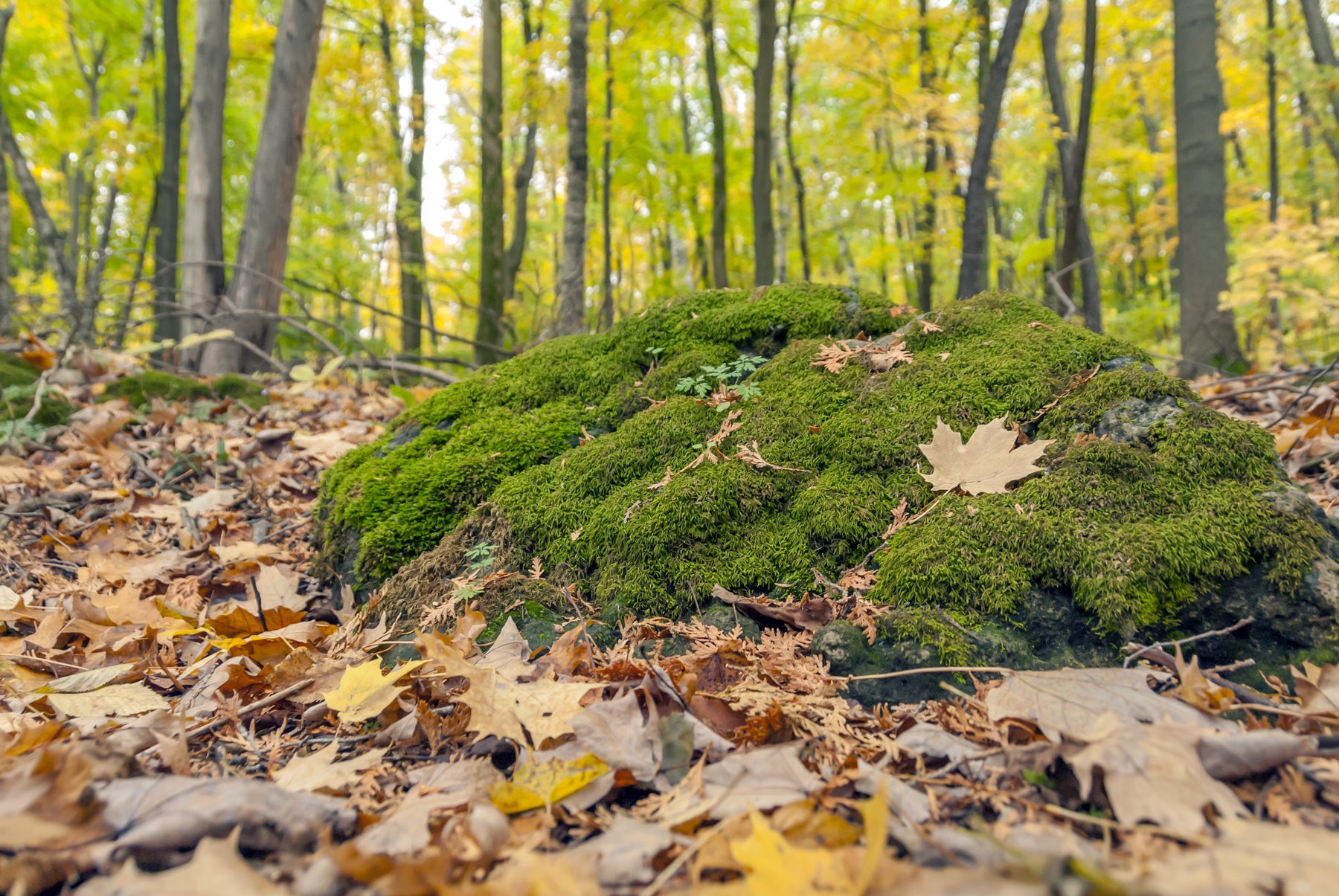
Where do all the leaves go?
When I was a child we lived in a house that was surrounded by trees. I particularly remember the four gigantic poplars by the roadside at the front of the house. Every Autumn it was a major chore to rake up all the leaves, and there were a lot of leaves! They covered the footpaths and parking area, getting wet and turning into a slippery mush underfoot. We’d spend time every weekend raking them all up, only to find the area completely covered again the very next morning. The leaves were dumped on a sprawling heap underneath some shrubs in a little-used area of the garden and forgotten about.
The thing is, the compost heap never seemed to get any bigger... Where had all the leaves gone?

Composting and decomposing
Decomposition is an important process in the cycle of life – dead remains are broken down into their constituent molecules (parts), which are returned to the ecosystem to be used again. The organisms that carry out decomposition are not glamorous, but what they lack in cuteness they more than make up for in importance. They are the global clean-up crew. Compost heaps teem with life – bacteria, fungi, worms, woodlice, millipedes – all busy breaking down and recycling the dead stuff.
Plants love compost – it gives them the minerals they need for healthy growth.
Spreading compost onto vegetable bed or into raised beds or pots will encourage good growth and bumper crops.
Biology teacher’s note: plants make their own food by photosynthesis. This food is in the form of a sugar called glucose. However, glucose on its own is not enough. Plants need to absorb minerals from the soil in order to make important molecules like proteins, DNA and chlorophyll. That’s where compost comes in – it’s full of these essential minerals.
How to compost at home
Home composting is not difficult or complicated, and requires minimal equipment. As well, it is a fantastic way to teach children about the concept of recycling, waste management and decomposing organisms. All the benefits of fresh air, exercise, having fun and learning about something new – what’s not to like?!
The recipe for good compost is straightforward. Choose a container of some sort, a wire mesh box is good, or you could use a large bucket with some holes drilled in.
Mix together items from the green and brown lists, add enough water to make it all damp, stir up every week or so.
Green list: weeds, grass clipping, vegetable peelings, egg shells, tea leaves and coffee grounds.
Brown list: dead leaves, sawdust or wood shavings, shredded cardboard, small twigs.
So go on, have some Autumn fun raking up the leaves and get composting! Your plants will thank you next year.






Leave a comment